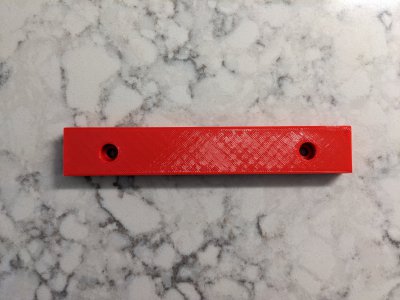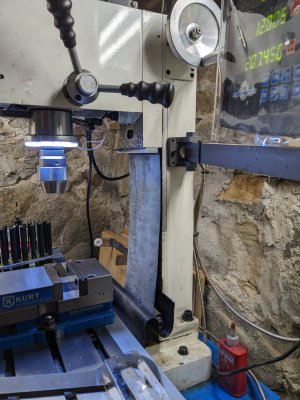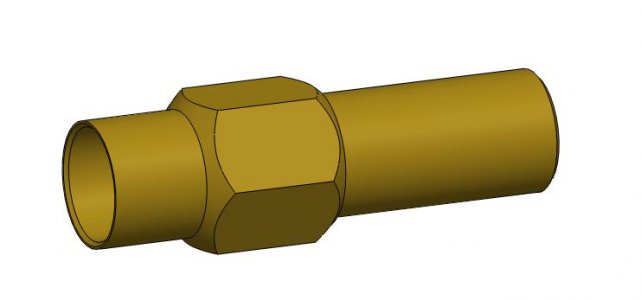- Joined
- Dec 18, 2019
- Messages
- 6,464
Sticking with the printed X read head holder for now. If I run into issues, I'll fab it in aluminum. It holds the read head quite snugly against the saddle, and will protect the read head if it gets hit.Know that feeling all too well. I ended up with that situation on my X axis - it was a touch short and also 5um instead of 1um. As you know, i ended up purchasing a second scale the correct size to replace the X axis scale. However I ended up with a 570mm travel, 660mm hole spacing and 676mm total length scale for my Z axis. The scale has more travel than needed but easily fit into the space and in fact sits nicely on the cast webbing with minimal spacers so i left it long - maybe you'll get lucky and be able to do the same. The brackets that came with my Sino scale were a bit mickey mouse but i was able to make them work - they are universal in the most broadest of terms.
Glad to hear that you got the X axis mounted. That should be the most challenging one - are you rolling with the 3D printed mount or are you going to mill it from Aluminum?
I'm printing a prototype curtain holder for my mill right now. That one will end up made of aluminum. I'm not sure I got the hole spacing right. A while back I basically wrecked the Z accordian. I didn't like it anyways, as the bottom piece was limiting Y travel. The piece will be just a 3/8 x 1 x 6 inch chunk of aluminum clamping some rubber sheet to the mill head. Getting the screw hole locations right while looking underneath the head, well that was a bit of guesswork, which is why I will print it. This is a simple print, so I can confirm fit. I already have milled the piece to length, just waiting for the holes. If I had some transfer screws of the right size, I would have used them. The screws are a weird size. I think they are M5, but a new M5 screw doesn't screw in the hole. They measure 4.76 mm, which is right about what a 10-32 mic's at. Since the screw is so short, it's hard to measure the thread. 0.8mm fits, which is correct for M5. Guess I will clean out the crud from the hole, and do an M5 fit check again. If it doesn't quite fit, I will tap the hole to M5.
Not quite sure how I will mount up the Z scale on the lathe just yet, but I will slowly cobble something together. At the moment I'm having a little bit of trouble visualizing it. I understand the basic idea, but implementing it on my lathe is tripping me up. If I had better access to the back, it would probably be a lot easier. I will print a couple of things to get in the ball park, then do aluminum from there. I'm envisioning some ghastly initial contraption with too many degrees of freedom and somehow reducing most of them, so that removal (for any reason) isn't a nightmare.





